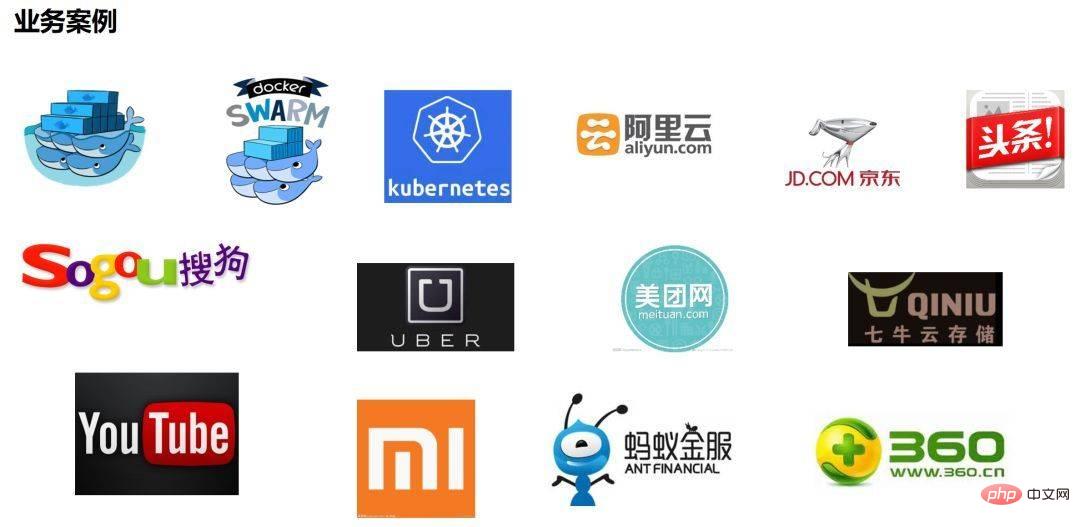Why is go language called go?
The reason why the go language is called go: I want to express that the running speed, development speed, and learning speed (develop) of this language are as fast as gopher. Gopher is a small animal that lives in Canada. The mascot of Go is this little animal. Its Chinese name is Gopher. Their biggest feature is that they dig holes very quickly. Of course, they may not only dig holes.

The operating environment of this tutorial: Windows 7 system, GO version 1.18, Dell G3 computer.
1. The creation and development of Go
An email sent by Rob Pike in reply to Robert Griesemer and Ken Thompson on the topic of programming language discussion on Tuesday, September 25, 2007 at 3:12 pm. The main text of the email is as follows: On the drive home I got some inspiration. 1. Name this programming language "go". It is short and easy to write. Tool classes can be named: goc, gol, goa. The interactive debugging tool can also be directly named "go". The suffix of the language file is .go, etc.
This is the origin of the name of the Go language. Since then, Robert, Rob and Ken began to conduct research and development within Google. Until 2009, Go was officially open source , the Go project team regards November 10, 2009, the day when the language was officially open sourced, as its official birthday. The source code was initially hosted on http://code.google.com, and was gradually moved to GitHub in the following years.
2. Notes on the development process of Go
The first thing is during development and design The first big surprise in the Go language process was to receive the following email:

This is an email written by Ian Lance Taylor on June 7, 2008 An email about the Go gcc compiler front-end written to Robert Griesemer, Rob Pike, and Ken Thompson at 7:06 pm on Saturday (Saturday). The main text of the email is as follows: My colleague recommended this website http://…/go_lang.html to me. This seems like an interesting programming language. I wrote a gcc compiler front-end for it. Although this tool still lacks many features, it can indeed compile the prime number filter program shown on the website.
The addition of Ian Lance Taylor and the implementation of the second compiler (gcc go) brought shock but also joy. This is not only an encouragement for the Go project, but also a proof of feasibility. This second implementation of the language was critical to the process of formulating the language specification and finalizing the standard library, and also helped ensure its high portability, which is part of the Go language promise. Since then, Ian Lance Taylor has become a central figure in the design and implementation of the Go language and its tools.
The second thing is that Russ Cox joined the newly established Go team in 2008 with his language design talent and programming skills. Russ discovered that the generality of Go methods meant that functions could also have their own methods, which directly led to the implementation of http.HandlerFunc, a feature that suddenly made Go infinitely possible. Russ also proposed more general ideas, such as the io.Reader and io.Writer interfaces, which laid the overall structure of all I/O libraries.
The third thing was hiring security expert Adam Langley to help Go reach the world outside Google. Adam has done a lot of unknown work for the Go team, including creating the original http://golang.org website and build dashboard. But his greatest contribution is undoubtedly the creation of the cryptographic library. At first, this library seemed to some of us to be underwhelming in terms of size and complexity. But it was this library that later became the basis for many important network and security software, and became a key part of the history of Go language development. Many network infrastructure companies, such as Cloudflare, rely heavily on Adam's work on the Go project, and the Internet is better because of it. I remember that when beego was designed, we also received a lot of suggestions from Adam when designing the session module. Therefore, as far as Go is concerned, we sincerely thank Adam.
The fourth thing is a company called Docker. It used Go for project development and promoted the container industry in the computer field, which led to the emergence of projects like Kubernetes. Now, we can definitely say that Go is a container language, which is another completely unexpected result.

Except for the famous Docker, it is completely implemented in GO. Kubernetes, the industry's most popular container orchestration management system, is completely implemented in GO. The subsequent Docker Swarm was completely implemented in GO. In addition, there are various famous projects, such as etcd/consul/flannel, Qiniu Cloud Storage, etc.
are all implemented using GO. Some people say that the reason why GO language is famous is that it has caught up with the cloud era. But why not put it another way? It is also the GO language that promotes the development of the cloud.
In addition to cloud projects, there are also companies like Toutiao and UBER, which have also used GO language to completely reconstruct their businesses.
2. Go language logo and mascot

The logo of Go language is the very simple two letters GO.

The reason why Go is called Go is to express this The language's running speed, development speed, and learning speed (develop) are all as fast as gopher.
Gopher is a small animal that lives in Canada. The mascot of go is this little animal. Its Chinese name is Gopher. Their biggest feature is that they dig holes very fast. Of course, there may be more than one. Digging a hole.


Go video tutorial】
The above is the detailed content of Why is go language called go?. For more information, please follow other related articles on the PHP Chinese website!

Hot AI Tools

Undresser.AI Undress
AI-powered app for creating realistic nude photos

AI Clothes Remover
Online AI tool for removing clothes from photos.

Undress AI Tool
Undress images for free

Clothoff.io
AI clothes remover

AI Hentai Generator
Generate AI Hentai for free.

Hot Article

Hot Tools

Notepad++7.3.1
Easy-to-use and free code editor

SublimeText3 Chinese version
Chinese version, very easy to use

Zend Studio 13.0.1
Powerful PHP integrated development environment

Dreamweaver CS6
Visual web development tools

SublimeText3 Mac version
God-level code editing software (SublimeText3)

Hot Topics
 1377
1377
 52
52
 What libraries are used for floating point number operations in Go?
Apr 02, 2025 pm 02:06 PM
What libraries are used for floating point number operations in Go?
Apr 02, 2025 pm 02:06 PM
The library used for floating-point number operation in Go language introduces how to ensure the accuracy is...
 What is the problem with Queue thread in Go's crawler Colly?
Apr 02, 2025 pm 02:09 PM
What is the problem with Queue thread in Go's crawler Colly?
Apr 02, 2025 pm 02:09 PM
Queue threading problem in Go crawler Colly explores the problem of using the Colly crawler library in Go language, developers often encounter problems with threads and request queues. �...
 What is the difference between `var` and `type` keyword definition structure in Go language?
Apr 02, 2025 pm 12:57 PM
What is the difference between `var` and `type` keyword definition structure in Go language?
Apr 02, 2025 pm 12:57 PM
Two ways to define structures in Go language: the difference between var and type keywords. When defining structures, Go language often sees two different ways of writing: First...
 Which libraries in Go are developed by large companies or provided by well-known open source projects?
Apr 02, 2025 pm 04:12 PM
Which libraries in Go are developed by large companies or provided by well-known open source projects?
Apr 02, 2025 pm 04:12 PM
Which libraries in Go are developed by large companies or well-known open source projects? When programming in Go, developers often encounter some common needs, ...
 In Go, why does printing strings with Println and string() functions have different effects?
Apr 02, 2025 pm 02:03 PM
In Go, why does printing strings with Println and string() functions have different effects?
Apr 02, 2025 pm 02:03 PM
The difference between string printing in Go language: The difference in the effect of using Println and string() functions is in Go...
 How to solve the user_id type conversion problem when using Redis Stream to implement message queues in Go language?
Apr 02, 2025 pm 04:54 PM
How to solve the user_id type conversion problem when using Redis Stream to implement message queues in Go language?
Apr 02, 2025 pm 04:54 PM
The problem of using RedisStream to implement message queues in Go language is using Go language and Redis...
 What should I do if the custom structure labels in GoLand are not displayed?
Apr 02, 2025 pm 05:09 PM
What should I do if the custom structure labels in GoLand are not displayed?
Apr 02, 2025 pm 05:09 PM
What should I do if the custom structure labels in GoLand are not displayed? When using GoLand for Go language development, many developers will encounter custom structure tags...
 How to solve the problem of Golang generic function type constraints being automatically deleted in VSCode?
Apr 02, 2025 pm 02:15 PM
How to solve the problem of Golang generic function type constraints being automatically deleted in VSCode?
Apr 02, 2025 pm 02:15 PM
Automatic deletion of Golang generic function type constraints in VSCode Users may encounter a strange problem when writing Golang code using VSCode. when...




